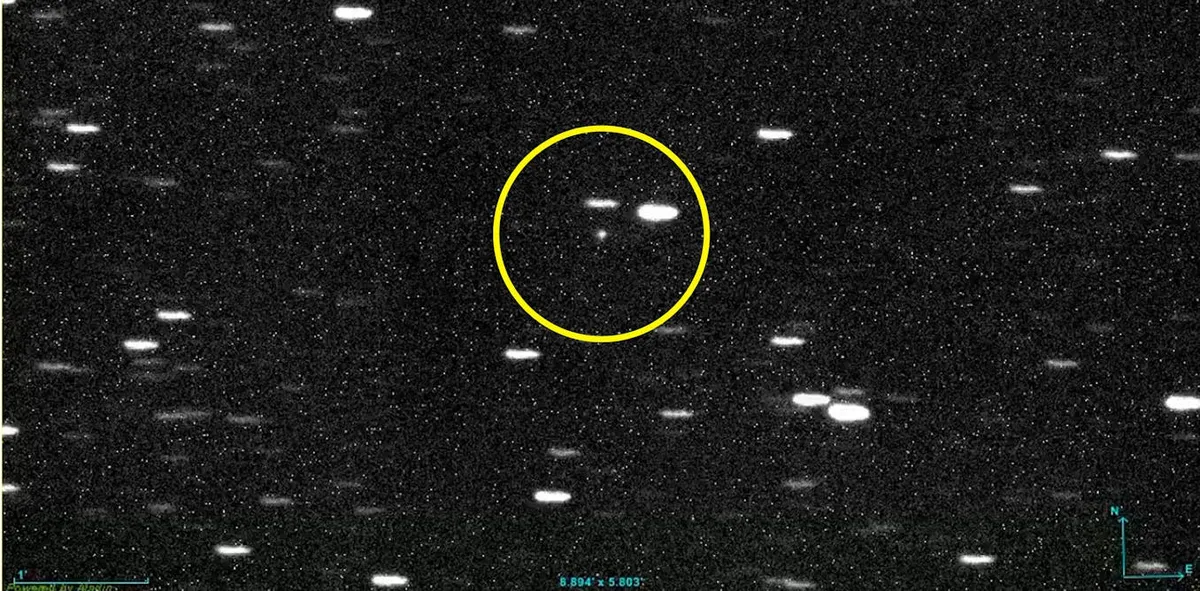
This week, astronomers made an exciting discovery as they spotted the third known interstellar visitor to our Solar System. Initially detected by the Asteroid Terrestrial-impact Last Alert System (ATLAS) on July 1, this cosmic interloper was temporarily named A11pl3Z. Following thorough analysis by experts at NASA’s Center for Near Earth Object Studies and the International Astronomical Union (IAU), this object has now received its official designation: I3/ATLAS.
There are compelling reasons to believe that 3I/ATLAS originated from outside our Solar System. Firstly, its incredible speed is a significant indicator. Current observations reveal it is hurtling through space at approximately 245,000 km per hour. This velocity is more than adequate to escape the Sun's gravitational pull, as any object near Earth would only need to travel just over 150,000 km/h to break free from the Solar System.
Secondly, the object exhibits a highly eccentric orbit around the Sun. In astronomical terms, eccentricity measures how "stretched" an orbit is, with 0 indicating a perfect circle and values up to 1 representing increasingly elongated ellipses. An eccentricity above 1 denotes an orbit that is not bound to the Sun. Notably, 3I/ATLAS has an estimated eccentricity of 6.3, which is by far the highest ever recorded for any object within the Solar System.
The discovery of 3I/ATLAS adds to the small but significant catalogue of interstellar objects that have visited our Solar System. The first was the cigar-shaped ‘Oumuamua, detected in 2017 by the Pan-STARRS1 telescope in Hawaii. Scientists monitored it for 80 days before confirming its interstellar origin. The second interstellar visitor, comet 2I/Borisov, was identified two years later by amateur astronomer Gennadiy Borisov and confirmed within weeks as well. Notably, the interstellar origin of I3/ATLAS was validated in a matter of days, showcasing advancements in observational techniques.
While we have only observed three interstellar visitors, including I3/ATLAS, understanding their origins remains complex. Recent research published in The Planetary Science Journal suggests that such objects might be more common than previously thought. They could originate from relatively nearby star systems, particularly Alpha Centauri, our closest interstellar neighbor, located just 4.4 light years away. As Alpha Centauri gradually approaches us, its closest encounter is expected in approximately 28,000 years. If it emits material like our Solar System does, estimates suggest that around a million objects larger than 100 meters in diameter could already be drifting in the outer reaches of our Solar System, a number that could increase tenfold as Alpha Centauri draws nearer.
Most of these materials would likely be ejected at relatively low speeds, under 2 km/s, making them more prone to drifting into our cosmic neighborhood over time, as opposed to the dramatic trajectories observed with I3/ATLAS.
Uncovering new interstellar visitors such as 3I/ATLAS is thrilling not only due to their rarity but also because each discovery offers a unique insight into our galaxy. Every confirmed interstellar object enriches our catalogue and enhances our understanding of their nature, how they traverse space, and their potential origins. The advent of powerful new observatories, including the NSF–DOE Vera C. Rubin Observatory, is significantly improving our capacity to detect these elusive objects. In its first 10 hours of test imaging, Rubin revealed 2,104 previously unknown asteroids, hinting at the revolutionary potential for future discoveries.
There is still much to learn about 3I/ATLAS, which is currently classified as a comet by the IAU Minor Planet Center. However, some scientists propose it may actually be an asteroid, approximately 20 kilometers across, due to the absence of typical comet-like features such as a glowing coma or tail. Further observations will be required to confirm its classification.
Currently, 3I/ATLAS is on a trajectory that brings it just inside Jupiter's orbit, with an expected closest approach to the Sun, slightly nearer than Mars, on October 29. After this encounter, it will return to deep space, with its closest approach to Earth scheduled for December. Importantly, it poses no threat to our planet.
Whether classified as a comet or an asteroid, 3I/ATLAS serves as a messenger from another star system. These sightings remain rare; however, as next-generation observatories like Rubin come online, the discovery of interstellar companions may become a more frequent occurrence.